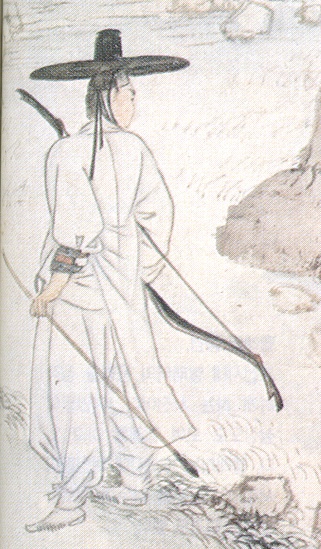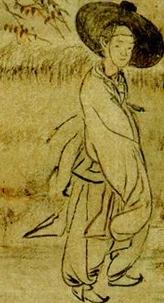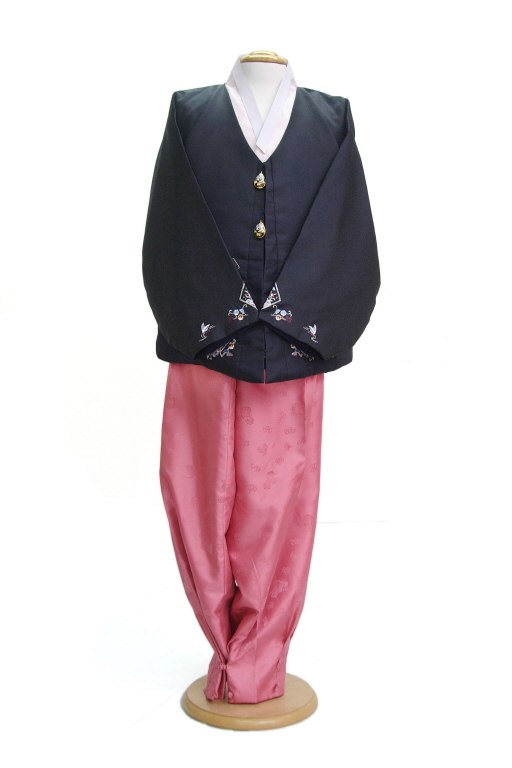Men's Hanbok
Traditional/ Modern Men's wear
Men's hanbok consists of Jeogori (a blouse shirt or jacket) and baggy pants calles baji.Origin of Hanbok traces to a widely used style of nomadic clothing in the Scytho-Siberian cultural sphere of northern Asia in ancient times.The earliest evidence of this common style of northern Asia can be found in the Xiongnu burial site of Noin Ula in northern Mongolia, and earliest evidence of hanbok's basic design features can be traced to ancient wall murals of Goguryeo.
Reflecting its nomadic origins in northern Asia, hanbok was designed to facilitate ease of movement and also incorporated many shamanistic motifs. From this time, the basic structure of hanbok, namely the jeogori jacket, baji pants, and the chima skirt, was established. Short, tight trousers and tight, waist-length jackets were worn by both men and women during the early years of the Three Kingdoms of Korea period. The basic structure and these basic design features of hanbok remains relatively unchanged to this day.



